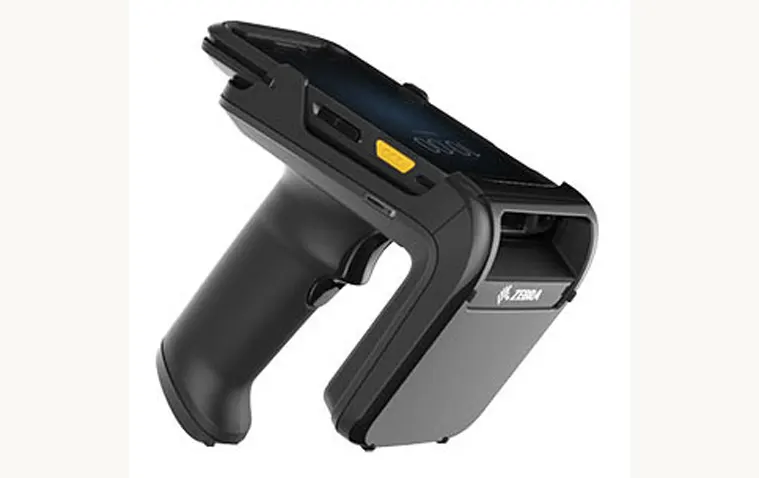The threat of COVID-19 is slowly subsiding, and companies are coming back to business with full force. From providing a safe space for their employees to maintaining the safety of customers, there are major decisions to take. Especially for industries like manufacturing, automotive, retail, apparel, or mining, the operations may undergo a sea change with digital transformation.
To make the environment more accessible and safer, technology is ushering in a new era of RFID initiatives. Speaking of just the retail industry, North America is currently leading, with over 93% of retailers investing in RFID adoption. Even the European retailers, about 77% of them, have been using RFID tagging technologies since 2020.
It is fascinating to see this technology growing in the Asia-Pacific region too, but at the same time, the concept of RFID integration is fairly new to most industries. They are prone to making mistakes, and while some are rectifiable with experience, there’s one thing that can completely make or break your attempts.

Choosing the wrong equipment for your use case.
RFID or Radio-frequency Identification technology is a wireless system that can read the radio signals emitted by the RFID system and send back signals for active and passive communication. From serial numbers to a series of data strings, the RFID systems contain a huge volume of information.
RFID inlays, tags, and labels are three core elements of the RFID system, are can often be used interchangeably. But there are some functional and physical differences between them to consider.
RFID inlays: They contain:
- Antenna
- Integrated circuit or chip
- Substrate
There are two types of RFID inlays, namely:
- Wet RFID inlay: It has a face with an adhesive, making it easier to apply by peeling and sticking.
- Dry RFID inlay: It comes without the adhesive and requires external substances to apply to an asset.
RFID Tag: They contain:
- RFID chip
- Antenna
- An encapsulation to protect the components
There are two types of RFID tags, as follows:
- Active: It has a wider read range and operates on a battery.
- Passive: It relies on receiving signals to power up.
RFID label: They contain:
- RFID chip
- Antenna
- Substrate
- Adhesive
They are very similar to RFID inlays. The only difference is that RFID labels are embedded on paper, making them ideal for tracking shipments. They are also called smart labels.
Now that you understand the different aspects of the RFID system, the next step is to know how to choose the right RFID solution.
Some crucial factors to consider, are:
- Inlay Size: With a larger inlay size, companies get longer read ranges. This is great for industries like mining, cement, and steel where the factories and workspaces are mostly huge due to gigantic equipment.
- Type of Readers: There are different use cases for overhead, fixed, and handheld readers, so companies should look into their industry’s needs and find the right fit.
- Asset to track: The type of assets that organisations want to track also has a say in the choice of the RFID system. For example, if there are assets in transit, active RFID tags seem to be the best choice. However, for temporary assets like monitoring guest attendance, RFID labels and inlays are better.
- Industry environment: For different industries, the labelling surface may have specific requirements. The environment also dictates the expected level of reading accuracy, and how the RFID tags will be read.
- Material surface: Another thing to consider is the surface of the material on which the RFID tags will be put. Some objects may interfere with the signal transmission, diminishing the signal range. The density of stacking items and box contents may also impact the signal range.
- Price: In the end, it all comes down to the price. Inlays and labels are frequently used as use-and-throw RFID technology because they are the most affordable tags available in the market. If you intend to bring these tags to temporary use, their price totally justifies the utility.
The best way to implement RFID initiatives successfully
To get improved results from RFID implementation, it is essential to follow the said guidelines and avoid any mistakes.
- Set measurable goals to analyse the success rate.
- Create a budget with your estimated project costs and needs.
- Analyse all aspects of your business operations and establish the workflow of RFID implementation.
- Choose the right technology for each RFID project based on the requirements.
- Train your entire team to make the best out of this new technology.
- Run a small-scale project to check the efficiency.
- In case you ought to scale your RFID solutions, expand the implementation keeping the benefits in mind.
When companies adhere to the rulebook and modify the rules as per their requirements, they can indeed succeed in their RFID initiatives. But only making an informed decision is not enough. Companies require the right supplier to implement all solutions and help them achieve their goals.
A good supplier will always identify your specific prerequisites, determine the right chip for you, and assess the application environment. Based on your business needs, there are various kinds of general, advanced, and specialty labels and inlays that can accelerate your RFID benefits and ROI.
QodeNext is an award-winning premier Track and trace company. We pioneered RFID rollout in INDIA. Building on our legacy we design, implement, and manage multiple RFID projects around the world.







